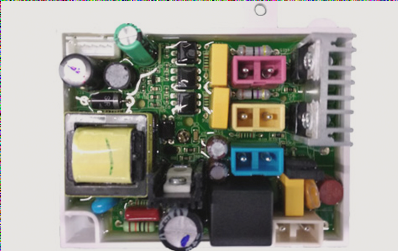SMT chip processing is a vital and essential step in the PCB board soldering process within PCB circuit board production. After soldering, it is not uncommon to find white residues on the PCB circuit board, which can detract from its appearance and potentially impact the performance of both the PCB and the PCBA. Therefore, it is crucial to identify the causes of these white residues and address them promptly.
The reasons for white residue formation after soldering on the PCB circuit board, along with corresponding treatment methods, are as follows:
1. The appearance of white residues during the PCB factory’s assembly process is typically due to the improper use of flux. Rosin flux often leaves white spots during the cleaning process, and switching to other types of flux may not always be feasible. This issue can arise in such instances.
2. If residues remain on the circuit board during production, white spots may develop after prolonged storage. In such cases, strong solvents can be utilized for effective cleaning.

3. Improper processing of the circuit board can also lead to the appearance of white spots. Often, a specific batch of circuit boards will exhibit issues while others remain unaffected. For this situation, it is advisable to clean the affected boards using a strong solvent.
4. Incompatibility of the flux with oxidation maintenance can cause problems. To address this, simply using a different flux can effectively resolve the issue.
5. The solvent used during the manufacturing process can degrade the raw materials of the PCB, resulting in white residues. Therefore, minimizing storage time is crucial. The solutions used in the nickel plating process can often contribute to this problem and should be given special attention.
6. Flux that has been used for an extended period may absorb moisture from the air, leading to white spots. Additionally, if fresh flux is used but solder remains too long before cleaning, issues can arise.
Before SMT technical operators apply anti-corrosion paint, SMT chip processing technicians should only need to spray it on the PCB circuit boards once, ideally limiting to three sprays. However, excessive spraying can result in a thicker final coating, reaching up to 300 microns. While a certain thickness may be appropriate, an overly thick coating can detract from the product’s appearance and negatively impact the PCB.
In reality, thicker anti-corrosion coatings are designed to be waterproof, heat-insulating, and moisture-proof. This principle is straightforward, and when applied correctly, these coatings should not adversely affect the PCB during SMT processing. Issues like uneven surfaces resembling orange peel or foam typically arise from improper spraying techniques. These can be completely improved and avoided.
It’s important to note that we do not endorse excessively thick anti-corrosion coatings. The first concern is cost; if a thin layer of anti-corrosion coating suffices, why apply three or four layers? Additionally, standard PCB thickness must be maintained, as overly thick coatings can lead to non-compliance with standards. Therefore, balancing cost and adherence to PCB thickness standards is crucial, aiming for a three-proof paint that is as thin as possible while still effective and without negatively impacting the PCB.
If you have any PCB manufacturing needs, please do not hesitate to contact me.Contact me



